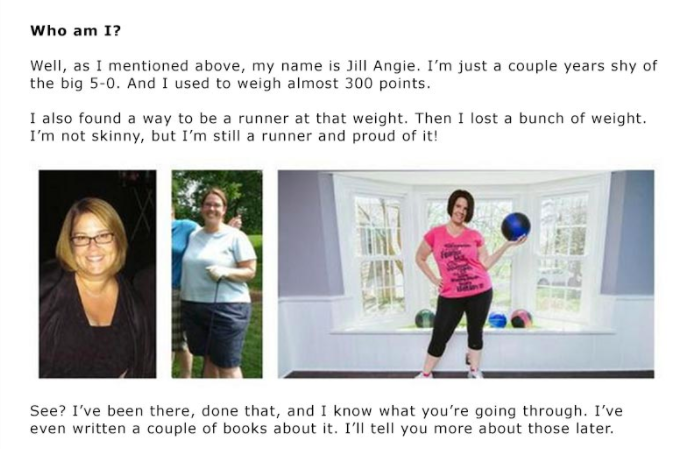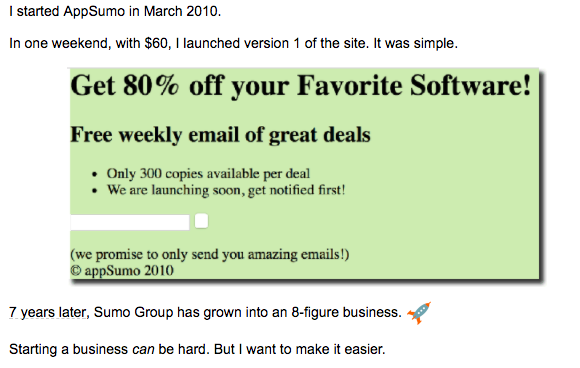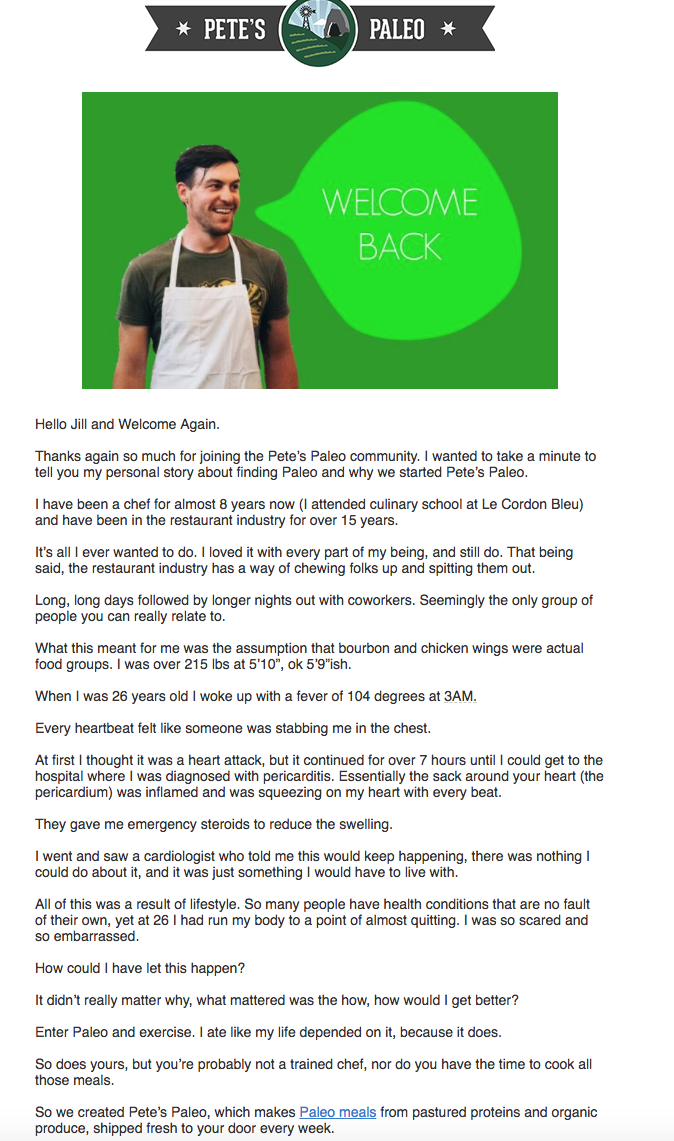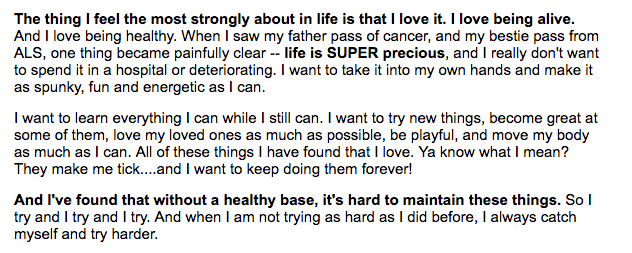
Why Every Great Marketer Should Send a Personal ‘Story Email’

Humans love stories. We communicate through them. We learn from them. Our personal stories and memories give our lives meaning and order.
In fact, your brain may actually crave stories: Scientists believe we are evolutionarily hardwired for narratives because they helped our ancestors survive.
Quick quiz: Which one is more effective?
Option A: There’s an animal in a cave over there. Don’t go near it.
Option B: My brother was mauled to death by a giant ferocious cat-like beast. The beast’s teeth are as long as your arm and as sharp as the deadliest arrow. The monster lives in that cave with the two twisted trees in front of it. Don’t go near it.
You don’t need to worry about sabre-toothed tigers anymore, but your brain is still much more engaged by the story in option B than by a burst of facts. It makes you fearful. It gives you goosebumps.
You remember a good story. It stays with you.
The Power of Telling Your Personal Story through Email
Good salespeople and marketers understand the importance and power of storytelling — and they use it to their advantage.
It’s why Coca-Cola doesn’t sell you carbonated water, high-fructose corn syrup, phosphoric acid, and caramel coloring — it sells you a “feeling.”
The company’s most iconic commercial of all time “I’d like to buy the world a Coke” focuses on the drink being a commonality among people all over the world. It brings people together — regardless of their backgrounds, faith, gender, race, or opinions. No one even takes a sip of the soda in the ad.
It’s this emotional connection — this feeling — that makes your business and marketing memorable. It makes your brand stand out among the myriad of marketing messages — email, text messages, social media, TV, voicemail, commercials — that people are bombarded with every single day.
And it’s one of the main reasons your readers will pick your business over your competitors.
So tell your personal story in an email. You don’t need to become Charles Dickens or Jane Austen to do so. Heck, you don’t even need to be a great writer. You just need to tell an engaging tale about your products and services, and why they matter to your subscribers.
4 Steps to Writing a Powerful “Story Email”
1. Keep it short.
Nowadays, we consume content at lightning speed. It’s rare if a person can dedicate a huge chunk of time to a long-form article. So we need to communicate at a quick clip, too. That means breaking our messaging down into easy-to-read, bite-sized pieces that are super relevant.
The following Story Email is from Jill Angie of Not Your Average Runner, who leveraged the AWeber platform to reach her customers.
Jill’s story is 10 sentences long. That’s it!

Keep your writing concise and cut out any words you can. It’ll not only make you a tighter, more effective writer, but it’ll keep your readers’ attention. In a world of information overload, less will be a welcome thing for your subscribers.
2. Ooze likeability.
We enjoy doing business with people we know, like, and trust — as opposed to a large faceless corporation. Humanize your message to increase connection and engagement with your subscriber.
One easy way to do this: Pretend you’re sending an email to a friend.
When we write emails to our list, we tend to forget that we’re a human communicating with other humans. We suddenly turn very formal, robotic, corporate, and, well, safe. Your readers signed up for your email list to hear from you. They want to hear from the voice behind the business or brand or company. So write like you talk. Show them that you’re a human being with a pulse. You’ll come off much more conversational and likeable.
Take Jill Angie’s Story Email, shown above in step #1. It may be short, but it’s super easy to read and extremely friendly. It makes Jill relatable. You want to run with her. You want her to be your coach. Eventually, when Jill pitches her books or workout plans to you, you’ll want to scoop them up, too.
3. Hit your reader’s biggest pain point.
Here’s an email from AWeber customer Noah Kagan, who runs OkDork.com. He’s also the founder of the ridiculously popular AppSumo, a site that sends out awesome daily deals for digital products.

Noah’s story is just four sentences! It’s short, but super compelling. He shows you how he found massive success — fast.
But the best thing Noah does? He hits his readers’ problem straight on: “Starting a business can be hard.” It can be intimidating.
Noah doesn’t just tell his story for the heck of it. He’s doing it in relation to the reader’s main pain point. In just a few words, he evokes feelings of frustration and worry and stress in his subscribers — while setting himself up as their solution. Starting a business can be hard — but it doesn’t have to be. That’s because Noah can make it easier for them. He can help them start their business and leave those worries behind.
Below is another example of a well-done Story Email. It’s from AWeber customer Pete Servold, owner of Pete’s Paleo, a food delivery service that sends healthy, seasonal, organic paleo meals directly to your door.
Pete’s Story Email may be longer than Noah’s, but it’s not long-winded.

Pete’s Story Email is easy to read, and he does a fantastic job painting the picture of his life in the restaurant industry (long days and nights filled with indulgent food choices), and the pivotal health event that changed his life.
Within Pete’s story, he hits his reader’s biggest struggle: weight loss and sticking to a healthy diet. But he makes it clear that he has the answer. Pete’s Paleo makes it easy for you to drop the pounds and regain your health. It worked for him. He’s leading his readers from their pain point straight to a solution in one short narrative.
4. Be authentic.
Cheri Alberts of the Watering Mouth has been an AWeber customer since 2012. She’s a wellness coach and recipe developer who offers consultations and meal plans to help her clients eat better, lose weight, find more energy, and look and feel better in their clothes.
Here’s Cheri’s story email:

Cheri’s Story Email is a lot different than Noah Kagan’s or Jill Angie’s. She gets much more personal.
The reason: As a wellness coach, Cheri must to get to the bottom of what’s causing her client’s unhealthy decisions. In order to do that, though, she has to build a deeper relationship with her subscribers first. So Cheri opens up in her Story Email and shares her vulnerabilities — warts and all — because one day she’ll ask her clients to do the same for her.
You may not want to — or have to! — reveal as many personal details as Cheri, but you can be just as authentic. Give a glimpse at where your company started, and how you or your product has drastically improved since then. Tell your struggles. Highlight your lows. Celebrate your highs. Be witty. Be emotional. Tell them what’s on your mind. Or even include a selfie (no photoshopping!) instead of a professional headshot. Most of all, be you. Authenticity is the key to building a foundation of truth and reliability with your subscribers. The stronger that foundation, the easier it’ll be to sustain a long-term, profitable relationship with your email list.
When to Send Your “Story Email”
The best time to send your subscribers your personal story is during the awareness stage of your marketing funnel. (Click here to understand the marketing funnel and how it can drastically improve your email marketing strategy.) Your subscriber just joined your list. They’re still getting to know you. This is the perfect time to engage with them on a deeper level by revealing what makes you unique compared to your competitors.
Schedule your Story Email to automatically send a day or two after they receive your Welcome Email. Or, if your personal story is only a few sentences, include it right in your Welcome Email. Either way, the earlier you start to emotionally connect with your readers, the better.
Want more great email writing tips? Check out AWeber’s FREE What to Write course, an email series that helps you craft the perfect emails. Plus, it comes with 45+ content templates so you can just fill in the blanks!
And if you’re ready to start sending phenomenal emails to your subscribers, then you’ll want to join AWeber today. With easy-to-use automation tools, free educational marketing content, and the best Customer Solutions team (seriously, they won TWO Stevie Awards last year, which are basically the Oscars of the service industry), we have everything you need to make your email marketing successful.
The post Why Every Great Marketer Should Send a Personal ‘Story Email’ appeared first on Email Marketing Tips.